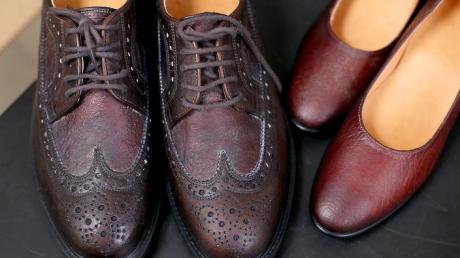by Alice Beyer Schuch – Jan/2017
This article was written for Slow Fashion Next (in Spanish), based on my presentation for the Agora Rollberg Pitches Unplugged: Circular Fashion Practices in Berlin.
It happens to me continuously. When I speak about circular fashion I often hear the question: it is something like recycling, right? Yes! As well. As we talked about in an earlier post, the circular fashion concept is much broader and offers many alternatives. One of them is to invest in textiles for circularity, which comprise the end of the productive cycle through recycling or biodegradability, or create a new beginning with the development of innovative materials.
By recycling we understand mechanical or chemical processes, which allow the use of discarded materials for the production of textile fibres. The first and simplest, mechanically defibrillates the fabrics to redo new threads and fabrics. This process damages and shortens the fibres, which reduces their quality, limits their circularity, and generally requires the addition of other fibres to guarantee their durability. The chemical recycling, as the name itself indicates, is where the initial raw material goes through a chemical process to produce new filaments that will be transformed into new fabrics.
Textile products can be classified as pre or post-consumer (waste from the textile industry or used garments, for instance). And when it is used as input for the manufacture of new textile products, we call “textile to textile” recycling (T2T). There is also the possibility of recycling the disposal of other sectors for the production of textile fibres – in 1993 the first polyester garments made from fibre recycled plastic bottles appeared on the market, and in 2005 also became possible T2T recycling of those garments made of polyester. In addition to bottles, other plastics and fishing nets collected from the ocean also serve the “repertoire” of recycled materials for the current fashion industry, which seek circularity and interconnection with other sectors. But we are still far from an effective and circular system.

Re-cycling means, as the name says, to return to the cycle, giving a new life to discarded products. But at present, the volume of T2T recycling in Europe is very low, according to Circle Economy. Much of what is recycled is actually “downcycled,” reducing its value by transforming fabrics into cleaning cloths or insulation material, which cannot or is unsuitable for recirculation. That happens for several reasons.
Firstly, we are not properly designing our products. Most of the 400 billion square meters of fabrics or the 80 billion pieces of garment made annually are not actually designed to serve the circular purpose. In addition, recycling systems face barriers in technology and in the market. In a survey conducted by Mistra Future Fashion, fashion and recycling companies, have pointed out that, among the obstacles to effective recycling of textile for textiles are:
- The use of textiles of mixed composition;
- The presence of rigid parts such as closures and buttons;
- The use of sewing threads of different composition with respect to the garment;
- The presence of colours, dyes, finishes, prints and toxic chemicals;
- The difficulty in the system of collection, identification and separation of the appropriate input;
- The limitations in the recycling processes and the little incentive for investments;
- The lack of demand for recycled materials, connected to the low market price of virgin materials;
Considering the difficulty of the current recycling, some companies began their search for alternatives in other sectors to supply the need of textile fibres, identifying the possibility of recycling by-products of the food industry, what I would call “food-fibres”.

In this area, we have options of fabrics made with pineapple plant fibres, orange leftovers, coffee grounds, milk, or bioplastics made from potato starch, corn, rice, beets, among others. There are also those who study slightly more “smelly” alternatives such as fibres made from chicken feathers, food discard, gelatine found in muscles and bones rejected from the meat industry, or livestock manure – all focused on reducing discard and finding biodegradable and more sustainable alternatives.
Recycle is definitely a circular verb and allows us to think of a series of end-of-cycle alternatives that can return as input to a new cycle. But when we talk about materials for circularity, there is another relevant group to be mentioned. These companies do not seek their input in resources that would be discarded from fashion or other sectors, instead, they bet on new alternatives from the beginning, developing innovative materials.
Algae, fungi, collagen, castor plant, elephant grass, tea, even spider silk or bee are presented as textile innovations of recent years – natural, renewable, biodegradable and low environmental impact alternatives. But despite so many positive features, the high costs in research and development, implementation, market entry, and adjustment of demand versus investment, restrict current use. In that case, collaboration with innovative fashion brands can make the way to the consumer market.

However, there are a growing number of alternatives with circular approach. Since the middle of the last century, we have experienced an exponential growth in population, oil consumption, polyester fibers (the most consumed textile fiber annually made from oil), and consequently an exponential growth in carbon dioxide emissions in the atmosphere. Textiles that will inevitably follow the same curve, but looking after alternatives that reduce waste, rethink the process, offer recycled, recyclable or biodegradable, disruptive and innovative options.
To prevent this process from being interrupted, communication and information among the different agents of the textile value chain is a vital part of the circular development. Maintaining a holistic and systemic vision, understanding what is necessary in the next stage and establishing connections, allows for better decision making towards a circular business model – focusing on the contribution to the betterment of these value chains, instead of thinking about the actual business model separately.



2 thoughts on “Recycle and Materials for Circularity”